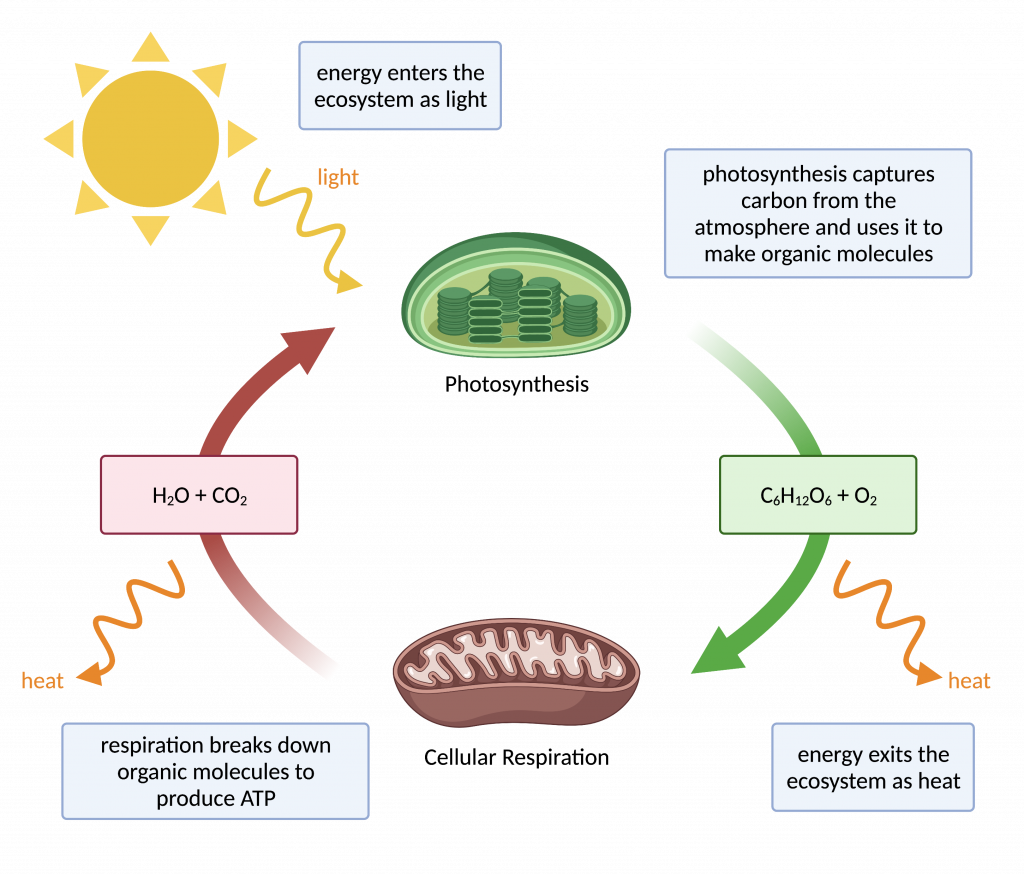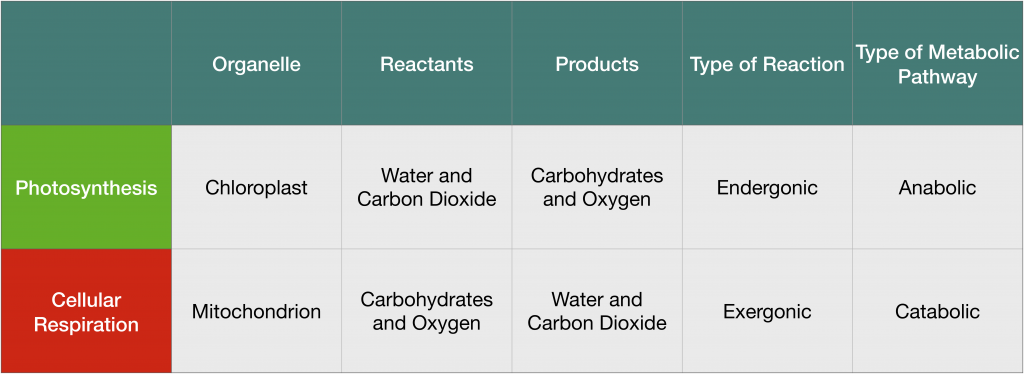22.1 The Energy Transformations that Sustain Life
Plants, animals, fungi, and all other living organisms must take in energy from the environment and convert it into a form that their cells can use. Matter and its stored energy enter an organism’s body in one form and are converted into another form that can fuel the organism’s life functions.
In the process of photosynthesis, plants and other photosynthetic producers take in energy in the form of light (solar energy) and convert it into chemical energy in the form of glucose, which stores this energy in its chemical bonds. Then, a series of metabolic pathways, collectively called cellular respiration, extracts the energy from the bonds in glucose and converts it into ATP, a form that all living things can use.

In some ways, the processes of photosynthesis and cellular respiration are opposite from one another. The products of photosynthesis are the starting materials for cellular respiration, and vice versa. We can summarize the reactions as chemical formulae.
Photosynthesis: 6H2O + 6CO2 → C6H12O6 + 6O2
Cellular Respiration: C6H12O6 + 6O2 → 6H2O + 6CO2
Energetically, photosynthesis is anabolic and endergonic, while cellular respiration is catabolic and exergonic.

There are similarities between the two processes as well. One of the most important is that ATP is produced by the same mechanism — chemiosmosis — in both of these metabolic pathways.
process of converting light energy into chemical energy
metabolic pathway that breaks down glucose and other food molecules to produce ATP
reaction or pathway that requires an input of energy to synthesize complex molecules from simpler molecules
describes chemical reactions that require energy input
reaction or pathway in which complex molecules are broken down into simpler ones, releasing energy
describes chemical reactions that release free energy
movement of ions down their gradient through a membrane protein; usually refers to the process that produces ATP by harnessing the energy of protons flowing down their gradient which powers ATP synthase

